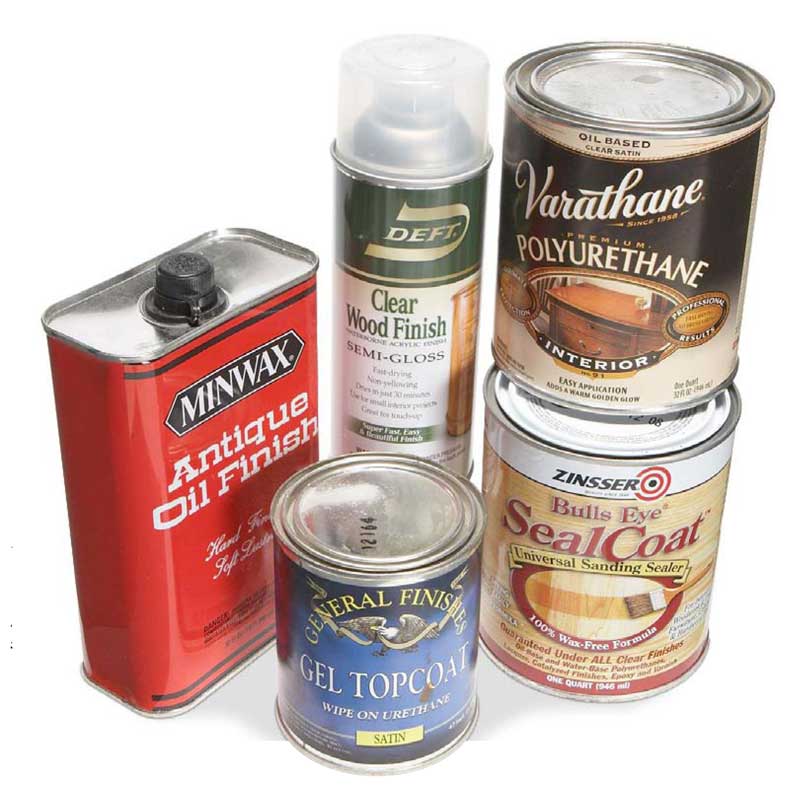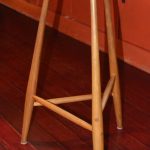We may receive a commission when you use our affiliate links. However, this does not impact our recommendations.
30 Finishing Supplies
30 must-have tools for finishing all types of woodworking projects.
By Kevin Southwick
Collecting woodworking tools is undeniably fun. As a professional finisher, I meet lots of woodworkers, on the job and in the classes that I teach. So I know that spending hundreds of dollars on a new router or a fine hand plane is thought of as a reasonable expense for an essential tool. Having to buy sandpaper, or a new can of finish, on the other hand, is usually likened to throwing money away.
Why is that? I think of finishing supplies as good investments; essential woodworking tools on par with those that cut and shape wood.Good finishing tools make it easier to apply good finishes, and that improves my enjoyment of woodworking. In my opinion, a well-equipped woodworking shop includes a well-equipped finishing cabinet.Here’s a collection of finishing tools that I think are worthy of your hardearned cash.
Finishes You Can Wipe, Brush or Spray
It makes sense to keep different kinds of finish on hand, because each project presents unique finishing challenges.Wipe-on/wipe-off finish, such as General Finishes TopCoat gel urethane, looks great, applies easily and you don’t have to worry about bubbles, drips, runs, sags, dust nibs, hair, or brush marks.Any finishing oil, oil/varnish blend, or gel varnish will do, as long as you prepare the surface well and buff the the finish thoroughly dry , to avoid streaks.Wipe-on/wipe-off finishes leave an attractive low sheen, but numerous coats may be required and they provide limited water resistance.
Film-building finish, such as Varathane oilbased polyurethane, is the best choice if you want a higher sheen or better moisture protection. Building a film finish requires a brush or pad, sanding between coats, and a little practice. Most oil-based polyurethanes can be thinned out to make wipeon/ wipe-off finishes.
Shellac is a must-have. A beautiful finish on its own, it has a fast dry time that’s a huge time saver. Zinnser SealCoat is liquid shellac that’s light in color and contains no wax, so it’s compatible with virtually any other finish.
Spray-on finish in aerosol cans is excellent for finishing smaller projects. Many different finishes are available as aerosols, including lacquer, shellac, acrylic, polyurethane, and more.Apply thin coats for the best results.Click any image to view a larger version.
Touch-Up Tools
Knowing how to hide mistakes makes you a better woodworker.Touch-up tools allow you to disguise defects such as glue spots, sanded through edges, light-colored scratches, and fill-ins that don’t quite match.Wood touch up pens are handy to have in your arsenal, as well as colored pencils and woodtone- colored markers from an art materials or office supply store.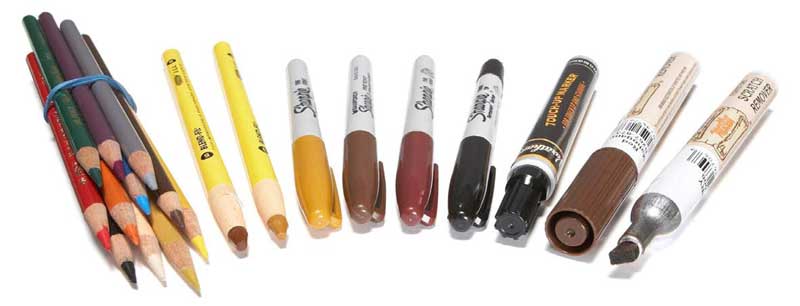
4 Types of Brushes
When you choose a finishing brush, consider the task you want to perform.To apply varnish, for example, but you’ll get the best results by using a varnish brush, rather than a paint brush. A varnish brush is designed and constructed to evenly flow on thin finishes such as oil-based polyurethane, shellac and lacquer; paint brushes are designed to apply much thicker material.The best varnish brushes have very fine natural bristles that are relatively short and densely packed. A 2″ wide brush is the most versatile size.
Redtree and Grammercy natural bristle varnish brushes are my favorites. Redtree 2″ brushes cost less than $20, about the same as a paint brush of comparable size and quality. Gramercy brushes, which are made by hand, cost twice as much, but they’re worth every penny.
A sash brush is a round, tapered natural bristle brush that is uniquely suited for evenly applying finishes to uneven surfaces such as shaped moldings or carvings. I keep a range of sizes ready for use. Sash brushes are available at artist’s supply stores.
A synthetic bristle brush made with Taklon nylon bristles is an excellent choice for water based materials.
Disposable brushes are indispensible: No cleaning required! Chip brushes (natural bristle) are useful for applying both stains and finishes (although they do shed bristles). Foam brushes work well on flat surfaces.However, shellac and lacquer will dissolve them.
Rags and Cloths
Scott brand shop rags are my top choice for general use.These lint free, heavy duty paper towels are economical and available in rolls or boxes—I prefer the boxes, because they keep the towels clean.
Knit 100% cotton rags are more absorbent than towels.They’re good for staining and for wipe-on/wipe-off finishes. Buy them ready for use or cut them from 100% cotton T-shirts—just avoid the seams, collars and armbands. Super absorbent, 100% cotton cheesecloth makes an excellent applicator pad that affords precise control for padding or wiping on film-building finishes. Wrap a pad of cheesecloth in nylon stocking fabric for an extra-nice applicator.
Micro-fiber tack cloths make traditional tack cloths obsolete.They grab and hold dust amazingly well, and they’re infinitely reusable. I use two—one that’s dry, for initial dusting and one that’s barely damp, for use immediately before applying finish.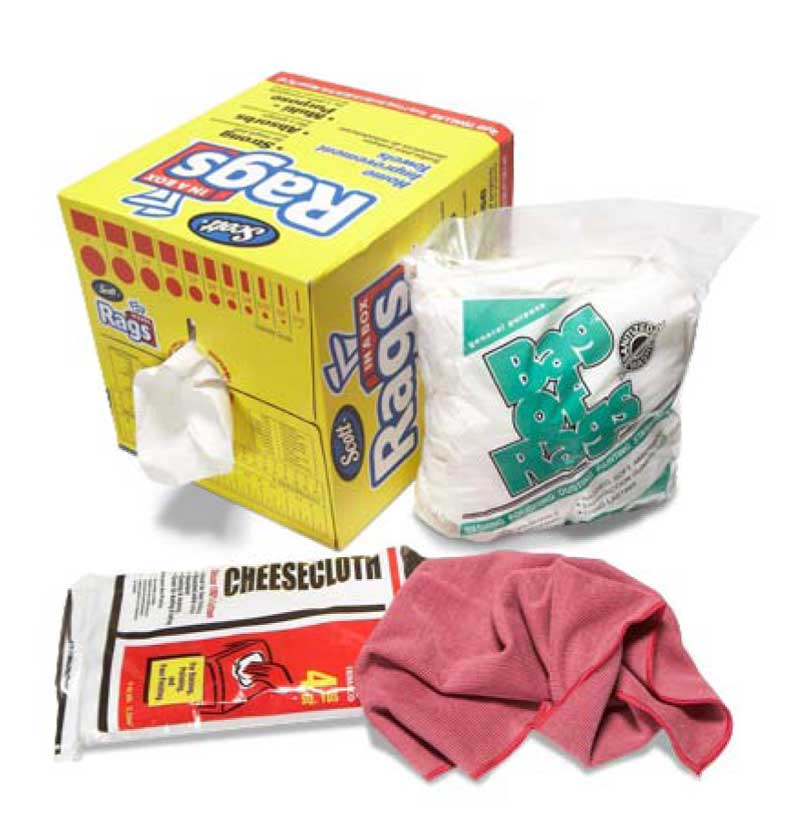
Dust Mask and Respirator
A reusable dust mask is worth the initial investment, because it can last for years. Just wash it by hand and it’s ready to reuse.Dust Bee Gone brand reusable masks are comfortable and much more effective than any paper disposable masks I have ever used.
A respirator mask with organic vapor-capturing cartridges is a musthave to limit your exposure to toxic fumes found in finishing products. Lay in a supply of cartridges and replace them regularly.
Surface Preparation Tools
Any tool that makes sanding faster or easier is welcome in my shop. Machine sanders are obviously important, but even the best leave marks that must be removed for a top-quality finish.That’s why hand sanding blocks are the most frequently used tools in my shop.
Shop-made sanding blocks of 3/4″ wood with 1/4″ cork or neoprene glued on the business end are my favorites for use on bare wood. Cork’s firmness works best for flattening; neoprene works best for subtle curves or easing an edge. I keep several different sizes and shapes to meet such needs as reaching into tight corners.
The Preppin’ Weapon is a good choice for sanding large flat surfaces; solid cork blocks work well for general sanding.
Hard felt or dense neoprene blocks work best for sanding film finishes between coats. These materials have flexible, cushioned working surfaces that provide consistent and delicate control.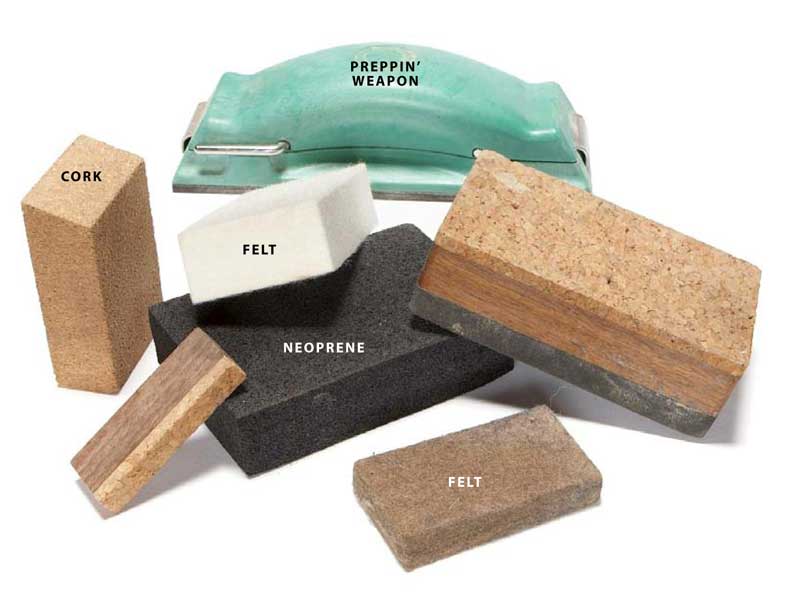
Top Quality Abrasives
High tech sandpaper is made with abrasive particles that stay sharp and are consistently sized,durable backing paper and no-load coatings, so they cut quickly, leave a uniform scratch pattern and last a long time. Stock ample supplies of sandpaper in every grit that you commonly use. Buy only the best quality paper, such as Norton 3X or 3M Sandblaster.
Steel wool ranges in quality, too. For example, the steel wool you find at hardware stores can be quite oily, a result of the manufacturing process.Top brands, such as Liberon, have very consistent, long, fine strands of steel that last longer, and don’t shred as easily, so they leave less of a mess.
Nylon abrasive pads (also called synthetic steel wool) are an alternative to using fine sandpaper or 0000 steel wool between coats of finish.Abrasive pads don’t leave steel fibers behind, but they don’t cut as consistently as good quality steel wool.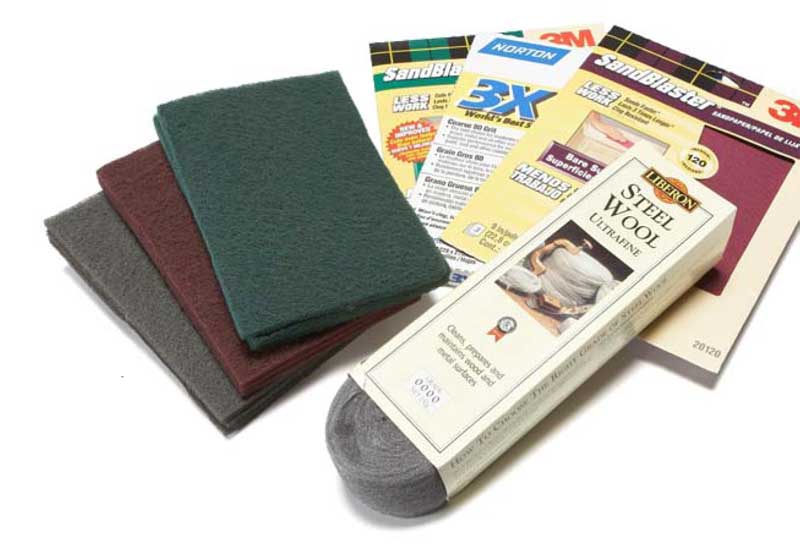
Task Lighting
A movable light source, such as this inexpensive clamp light, is especially helpful to have during sanding and finishing operations. Highlighting surfaces with light from raking angles reveals defects and problems much more clearly than overhead light.
Good overhead lighting is also important. Be aware that colors look different under different types of lighting. Incandescent light makes colors appear “warmer” than natural (sun) light and fluorescent light makes colors appear “cooler”. For this reason, color matching should always be done under the same type of lighting in which the final results will be viewed.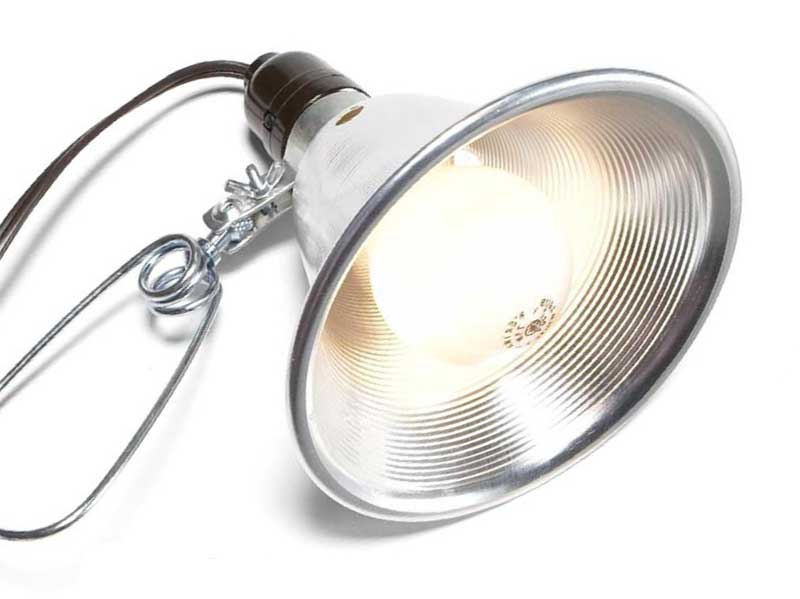
Wood Coloring Materials
Changing the natural color of wood is optional, of course. But when the time comes, it’s good to be familiar with two types of stains.
Pigmented oil stains in liquid or gel form are usually the easiest wood colorants to use.Gel stains are especially good for color matching,because they can be used like a glaze for layering color. Stains and glazes made using artist’s oil colors offer the widest choice of colors.To make a liquid stain, mix the oil colors in a 2 to 1 solution of mineral spirits and boiled linseed oil.To make a glaze, mix the oil colors with glazing medium.Artist’s oil colors and glazing medium are available at artist’s supply stores.
Dye stains are unique because they have both powerful and subtle coloring abilities. For example, they can turn maple jet black, gently tint it to an aged golden tone or amplify its curly figure.Water-soluble dyes are the easiest to use on bare wood and usually the best choice for accentuating highly figured woods.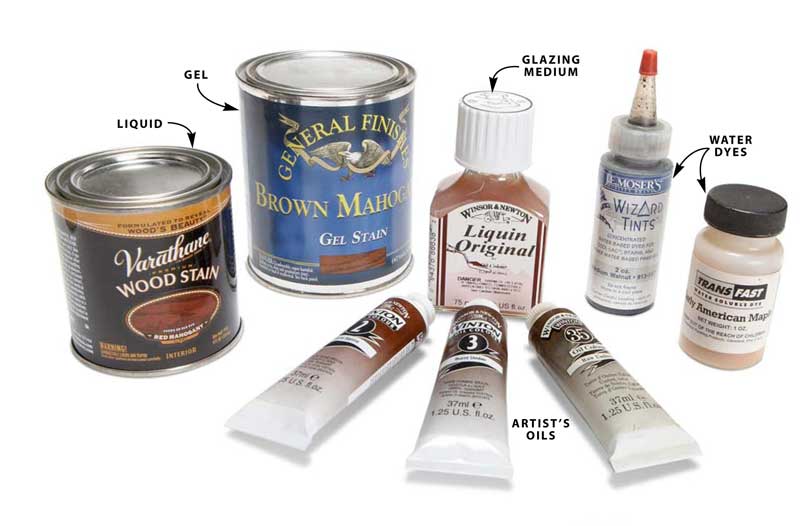
Information for Your Brain
Creating a great finish begins before you open a can. Books about finishing wood are loaded with useful information, techniques and formulas; facts as well as honest opinions. I’ve learned something new from every finishing book that I’ve read. Bob Flexner’s “Understanding Wood Finishing” is comprehensive and well organized. It also has an excellent in-depth index that’s helpful whether you’re seeking general information or trying to solve a specific problem.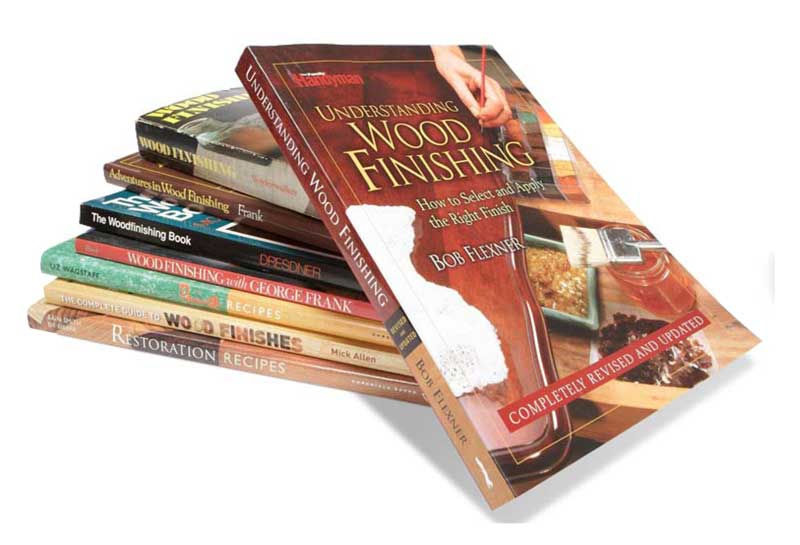
Dust Collection
An effective shop vacuum traps dust without re-circulating small particles back into the air, so they can’t ruin your finishes. Fein vacuums come with cloth filters that remove dust particles down to 5 microns; even finer filters are available as upgrades.
A room air filtration system, usually installed to remove fine airborne dust for health reasons, will also clean the air before you apply finishes. Run the system for an hour or two and shut it off just before finishing begins. This story originally appeared in American Woodworker April/May 2009, issue #141.
This story originally appeared in American Woodworker April/May 2009, issue #141.
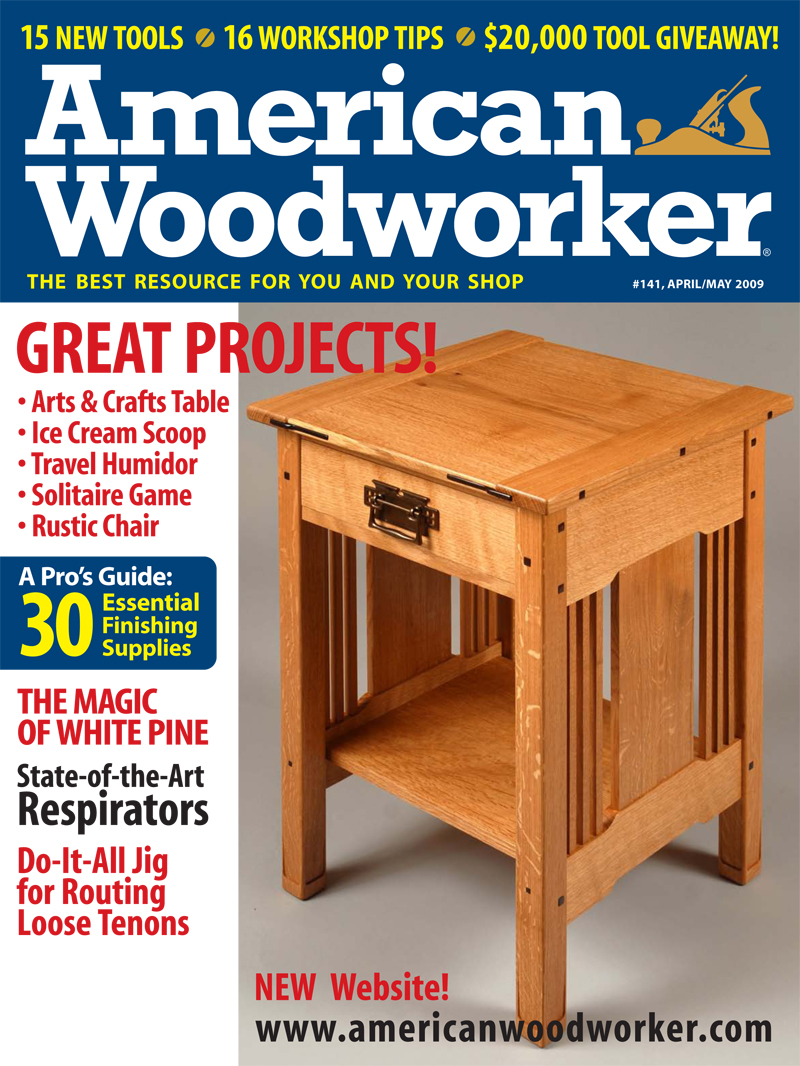
Here are some supplies and tools we find essential in our everyday work around the shop. We may receive a commission from sales referred by our links; however, we have carefully selected these products for their usefulness and quality.




